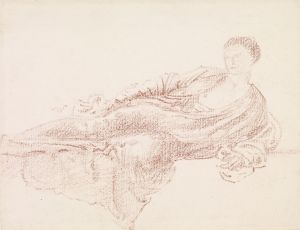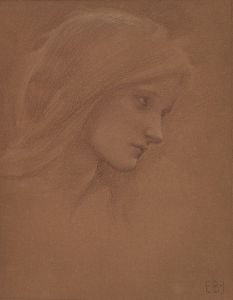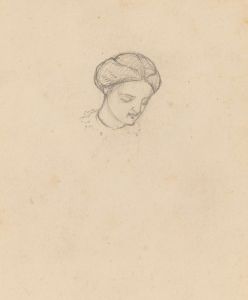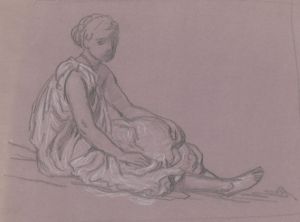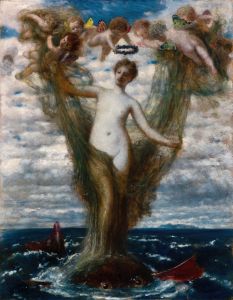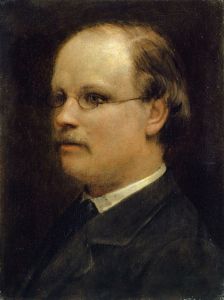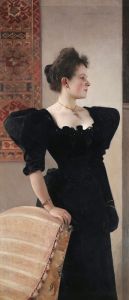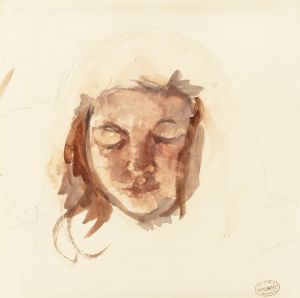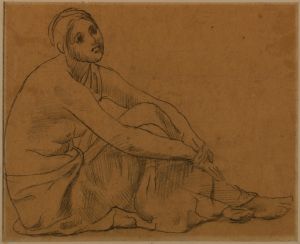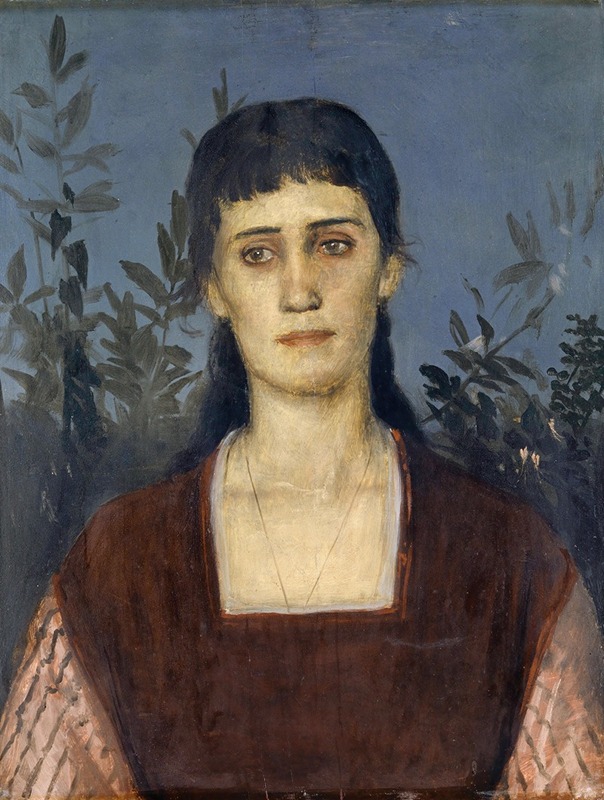
Portrait of Clara Bruckmann-Böcklin, Eldest Daughter of the Artist
A hand-painted replica of Arnold Böcklin’s masterpiece Portrait of Clara Bruckmann-Böcklin, Eldest Daughter of the Artist, meticulously crafted by professional artists to capture the true essence of the original. Each piece is created with museum-quality canvas and rare mineral pigments, carefully painted by experienced artists with delicate brushstrokes and rich, layered colors to perfectly recreate the texture of the original artwork. Unlike machine-printed reproductions, this hand-painted version brings the painting to life, infused with the artist’s emotions and skill in every stroke. Whether for personal collection or home decoration, it instantly elevates the artistic atmosphere of any space.
Arnold Böcklin, a Swiss symbolist painter, is renowned for his imaginative and often fantastical works that blend mythological themes with a unique sense of realism. One of his lesser-known works is the "Portrait of Clara Bruckmann-Böcklin, Eldest Daughter of the Artist." This painting is a testament to Böcklin's ability to capture the essence of his subjects with both emotional depth and technical skill.
Arnold Böcklin was born on October 16, 1827, in Basel, Switzerland. He studied at the Düsseldorf Academy and later traveled extensively throughout Europe, including stays in Rome, where he was influenced by the Italian Renaissance and classical antiquity. Böcklin's work often reflects his fascination with mythology, nature, and the human condition, themes that are evident in his most famous painting, "Isle of the Dead."
The "Portrait of Clara Bruckmann-Böcklin" is a more personal work, focusing on the artist's family life. Clara was Böcklin's eldest daughter, and this portrait captures her in a moment of serene contemplation. The painting is characterized by Böcklin's meticulous attention to detail and his ability to convey the personality and mood of his subject. The use of light and shadow in the portrait is particularly noteworthy, as it highlights Clara's features and adds a sense of depth and realism to the composition.
Böcklin's style in this portrait is representative of his broader artistic approach, which often involved a careful balance between realism and imagination. While the portrait is grounded in a realistic depiction of Clara, there is also a subtle sense of idealization, a common trait in Böcklin's work. This blend of realism and idealization is a hallmark of Böcklin's portraits, which often convey a deeper narrative or emotional resonance beyond the mere physical likeness of the subject.
The color palette in the "Portrait of Clara Bruckmann-Böcklin" is subdued yet rich, with earthy tones that complement the naturalistic setting. Böcklin's use of color is deliberate and enhances the overall mood of the painting, contributing to its timeless quality. The background, while not overly detailed, provides a harmonious backdrop that does not detract from the focus on Clara herself.
Arnold Böcklin's portraits, including that of his daughter Clara, are less well-known than his mythological and allegorical works, yet they offer valuable insight into his personal life and artistic priorities. Through these intimate portrayals, Böcklin reveals his deep affection for his family and his commitment to capturing the human spirit in his art.
While specific details about the circumstances surrounding the creation of this portrait are limited, it remains an important piece within Böcklin's oeuvre. It reflects his skill as a portraitist and his ability to infuse his work with both personal significance and universal appeal. The "Portrait of Clara Bruckmann-Böcklin" stands as a testament to Arnold Böcklin's enduring legacy as a master of symbolism and portraiture, offering viewers a glimpse into the private world of one of the 19th century's most intriguing artists.





